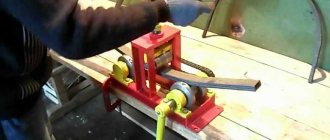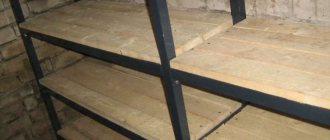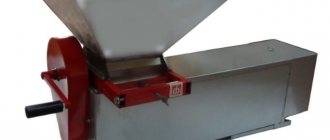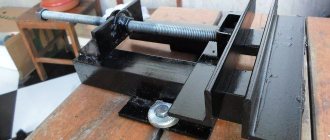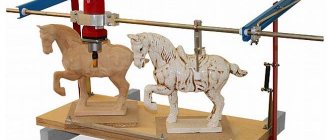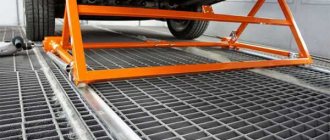What is a wall chaser
When renovating apartments, homeowners take a new approach to the placement of utility networks and various communications:
- water supply pipes;
- heating lines;
- power cables;
- sewer risers.
It is understandable that apartment owners want to place communications inside the walls and thereby improve the appearance of the premises. The technology for hidden placement of highways involves the creation of special grooves. In the vocabulary of professional builders, such channels are called grooves. For their production, a gas silicate wall chaser is used.
Wall cutter for aerated concrete. The tool began to be used relatively recently. Before its appearance, equipment was used for chiselling grooves that created vibration during operation and negatively affected the strength of building structures:
- a bolt or chisel that was struck with a hammer. The process of creating the grooves was slow and required considerable effort;
- pneumatic hammer. The tool created increased noise and significant vibration. A lot of dust was also present during the formation of the channel;
- industrial hammer drill. During the formation of cavities, vibration negatively affected the strength of concrete and caused the formation of cracks.
The use of these types of equipment required significant physical effort and was characterized by reduced productivity and increased labor intensity. Increased concentration of dust, significant noise and vibration caused a lot of inconvenience. The outdated equipment was replaced by a wall chaser for aerated concrete - a hand-held tool that has many advantages:
- reduces the duration of laying channels in walls;
- reduces the labor intensity of construction operations for gating;
- allows you to provide the necessary channel geometry in various building materials;
- provides the ability to adjust the width and depth of the cavity being formed;
- removes dust from the treated area, reducing dust concentration;
- forms a channel of the correct shape with constant dimensions along the length.
Industrial wall chaser for aerated concrete.
For one-time work, there is no need to purchase an industrial wall cutter for aerated concrete, which is quite expensive. There is a good solution - you can assemble a wall chaser from an angle grinder with your own hands. Drawings are not needed for this modernization, because the design is simple. Using available materials, you can expand the technical capabilities of home tools equipped with an aspiration system. The use of a self-made tool ensures:
- reducing the cost of plastering the groove due to the neat shape of the channel. The resulting groove does not require an increased amount of plaster;
- the ability to cut grooves in building materials with increased hardness. In this case, two cuts are performed at once in one pass.
After processing, all that remains is to remove the cut building material located between the cuts, and you can begin laying communications.
We hammer walls without dust - 7 advantages of the AirDuster Mechanic nozzle
Such attachments are quite effective and are produced by various well-known manufacturers - Hilti, DeWalt and others.
To solve this problem, Distar has released a universal casing that can be used on 95% of all existing angle grinders and angle grinders. It's called Mechanic Air Duster.
The dust removal process in this casing is implemented to such an extent that in some cases you can even do without a construction vacuum cleaner. It is enough to put a hose on the pipe. In this case, dust will be sucked in only due to air flows.
And you will no longer need to buy such protective masks.
Air intake occurs through radial slots, forming a turbulent directed flow.
Of course, if you have an industrial vacuum cleaner, then it is better to use AirDuster in conjunction with it. Moreover, the power of such a vacuum cleaner can be no more than 1600W.
This will be quite enough to work comfortably and ditch walls. The dust collector itself, unlike similar products from other manufacturers, is very open.
This, in turn, makes it possible to perfectly see and control the cutting area and the edge of the groove. In addition, due to the open dust removal zone, the diamond blade is cooled more efficiently.
Another plus is its low weight and dimensions. For the same Hilti, when cutting grooves with a grinder and a DC-EX230 casing, you have to carry extra kilos up and down. At the end of the working day, from such work your hands will simply fall off from fatigue.
Installation on an angle grinder
The dust extractor is mounted on a standard protective casing for angle grinders. Moreover, the whole process takes literally one or two minutes. Compare with Hilti's installation process:
It doesn’t matter what kind of grinder you install it on. AirDuster fits the most popular brands - Hilti, DeWalt, Bosch, Skil, Makita, Metabo, AEG.
There are some kind of thrust bearings at the top and bottom of the casing.
Combine the standard protective cover of the angle grinder (where the disk will be located) and the back side of the Mechanic up to these stops.
Unfold the two fasteners with the “wings” so that they tighten and connect the entire structure together. Then simply tighten the screws.
In this case, you need to pay attention and control the symmetry of the nozzle in relation to the angle grinder casing. That's all! Dust extraction and grinder are ready for work
That's all! The dust extractor and grinder are ready for use.
Wall chipping
As soon as the disk is completely immersed in the material, the further gating process proceeds without problems.
The device does not have any problems connecting the hose from the vacuum cleaner to the casing itself. For many manufacturers, the bayonet size (type of hose fastening) is selected according to the design and dimensions of their own tool, and not the competitor’s tool.
Because of this, problems arise in finding or making homemade adapters. On the AirDuster nozzle everything is made simple. Here, the size of the dust extraction tube is made to match the size of the hose of a construction vacuum cleaner.
Remove the standard bayonet from the hose and screw it directly onto the dust extraction tube. After which the grinder with dust removal is completely ready for work. For a tighter connection, you can screw electrical tape or tape over the exhaust pipe.
The Mechanic Air Duster casing from the Distar company is suitable for angle grinders with diamond blades with a diameter of 125mm and 230mm. For the 230th angle grinder, the disc overhang will be the same as that of a standard casing - 60mm. This is more than enough to make a deep groove.
To summarize, we can briefly describe all the advantages of this nozzle for tapping walls for wiring:
versatility - suitable for almost all brands of angle grinders
does not require powerful industrial vacuum cleaners. 1.6 kW is enough. In extreme cases, you can even do without it; there would be a hose for dust removal.
quick installation and replacement
visual control of the cutting area
The cooling of diamond discs has been improved, which means their performance and service life will be increased
You can check the current price and order such a nozzle for home delivery from here.
A little about gating
A groove (the term “furrow” is less commonly mentioned) consists of two parallel grooves, the width and height of the walls of which determine the possibility of installing communications in it. To make grooves, the following groove dimensions are required:
- Width from 3 to 50 mm (the first option provides for laying only power and low-current cables in the groove, the second - for installation of heating system pipes);
- The depth of the groove is no less than its width, but it is better with a small margin of 5...10 mm;
- The bottom of the groove is smooth, without protrusions.
Sometimes you have to cut inclined grooves. For oblique grooves, all specified dimensions are usually increased by 10...12%. The groove should be as even as possible, since any slope of the groove will automatically increase the length of the cable or pipe. The distance from the groove axis to adjacent ceiling structures, openings, etc. must be at least 150 mm, and to the gas pipeline elements - at least 400 mm.
The material of the walls also matters. Since the groove is obtained by removing material from under the tool disk, all dust and stone fragments fall into the worker. Even when performing such work in walls made of foam or aerated concrete, the need for dust collection is very important, since fine dust will remain in the air for a long time.
In a professional wall chaser, all these problems are solved by connecting a vacuum cleaner with a cyclone filter to the tool. Ordinary mesh ones will become clogged with gating products within a few seconds of continuous operation of the wall chaser.
The second significant difference between gating with a specialized tool is the presence of a movable frame with wheels, which, when controlled, can significantly reduce the load on the worker’s hands. A single-disc wall chaser attachment for an angle grinder does not fundamentally solve the problem, since the depth of the groove is not limited in any way, and manual removal of the jumper is very labor-intensive and does not ensure good quality of the bottom of the resulting groove. In addition, during the second pass it will not be easy to achieve parallelism of the walls of the groove.
Wall chaser for foam blocks - design features
Manual tools for grooves can be manufactured in the following design options:
- based on a regular grinder. The design provides for the installation of two concrete cutting discs on the device shaft, between which a sleeve of the required length or the required number of washers can be installed. By changing the length of the spacer element, the interval between the cutting discs is adjusted, corresponding to the width of the channel;
- modernized version. It is an improved version of the grinder, on which, in addition to two circles, a casing made of metal sheet is mounted. Dust generated during the gating process is removed through a pipe attached to the metal casing of the aspiration device;
Wall chaser based on a regular grinder
- based on a hand grinder. An improved version of the tool is similar in design to a grinder with an aspiration casing. A distinctive feature of the design is the presence of a mobile platform with wheels, fixed at the bottom of the dust receptacle. This option allows you to easily move the device along the wall without applying significant effort.
An electric wall chaser for a gas block is more efficient than a manual tool due to the following points:
- increased cutting speed;
- smooth surface of the groove walls;
- clear channel geometry;
- increased security;
- aspiration possibilities.
Modern electric scoring tools include:
- protective casing. It prevents the operator from being injured by fragments when rotating the disks;
- aspiration pipe. Provides dust extraction from the work area when connected to a vacuum cleaner;
- work site. Provides smooth movement of the device along the wall and allows you to adjust the depth of the groove;
- working handle. It can be installed in various places of the casing, providing a convenient location for the device when cutting;
- electric drive. Accelerated slitting is provided with a power of 2 kW and a spindle speed of 5500 rpm.
If you use a grinder instead of a wall chaser
an angle grinder with a homemade dust extractor, suitable for small jobs.
It is clear from the design that, in extreme cases, the machine for making grooves can be replaced with an ordinary angle grinder - put a concrete disc on it and make the necessary cuts in two passes. This is actually done if one small groove is needed, but practice and multiple reviews show that the dust after such a groove will settle for a long time, which can stall the whole work.
If it is necessary to make several grooves, the loss of time will be significant, and if such work is performed with some frequency, then the method becomes ineffective. Other disadvantages of this method are the inability to maintain the same dimensions of the groove edges and their depths. This cannot be called a significant drawback, but sometimes it can lead to a piece of the wall falling off when the core of the groove is hollowed out.
If the length of the mounting shaft allows, then you can put two concrete discs on the grinder at once and then the groove will be cut in one go. Even if we do not touch upon the issue of safety precautions, there will be no less dust and it will settle at the same speed. As a result, the time gain is insignificant, and the risk of injury increases by an order of magnitude.
Application benefits
Wall chipping is a difficult, troublesome task that takes a lot of time and effort. Previously, a variety of devices were used for such work: a chisel and chisel, a hammer drill, an angle grinder. But it is much more convenient and efficient to use a wall chaser or an attachment on an angle grinder for chasing.
So, using a specialized tool has the following advantages:
- The speed of work completion increases significantly, and labor costs are reduced.
- Can be used in conjunction with a construction vacuum cleaner.
- Work safety increases.
- It is easy to adjust the width and depth of the groove.
- The grooves are smooth, without chips or drops.
Wall chaser design and functions
Structurally, this universal tool is most similar to an angle grinder (angle grinder), which in everyday life is called an angle grinder. It is widely believed that this is an angle grinder with two discs. Frankly speaking, it is almost correct. The main difference is that the wall chaser is equipped with a powerful electric motor, usually with the ability to control speed and smooth start. Good models have overheating and overload protection functions. In case of significant loads, they will allow you to save the tool.
The wall chaser uses diamond discs, the distance between them is adjusted to obtain a groove of the required width (usually up to 60 mm). For safety reasons, they are covered with a special casing. In addition, the casing has an outlet for connecting a vacuum cleaner, this allows minimizing the emission of dust during gating. To obtain the required depth, it is equipped with a special adjustable stop (usually up to 80 mm).
With the help of an attachment for an angle grinder, you can completely replace the wall chaser.
How does a wall chaser work?
To understand how to assemble a homemade wall chaser from an angle grinder, you need to know how a device created in a factory works. Its main parts are a powerful electric motor, on the shaft of which two concrete discs are mounted. The distance between them is adjusted with nuts. Additional, but no less important components are a protective casing, which also serves as a dust collector, and an adjustment bar, which determines the depth of the groove.
The required cutting depth is set, a vacuum cleaner is connected and now you just need to run the wall cutter along the markings drawn on the wall, after which the hammer used for wall cutting (popularly called a “shovel”) is put on the hammer drill and the concrete is knocked out from inside the cut.
Features of choosing a tool
When there is a need to purchase such a tool, it is better to follow simple instructions:
- Select the required power of the tool. Here it is important to be guided by the amount of work ahead. Low-power wall chasers (up to 1.3 kW) are suitable for solving small household problems. Medium-power tools (1.3 kW - 2 kW) can cope with all household tasks, they heat up much less than their low-power counterparts, and their service life is much longer. It makes sense to buy powerful models over 2 kW only for regular and very large, volumetric work. In addition, the more powerful the tool, the heavier it is. This feature should also be taken into account.
- Determine such characteristics as the required maximum depth and width of the groove, the possibility of cutting the groove at an angle, the range of regulation of the electric motor speed.
- Availability of additional options: slip clutch, protection against overheating and overloads, a brush wear control system, the ability to use it in “grinder mode”, the presence of a vibration protection system.
Electric
This is a powerful tool that has two rubber rollers that help the wall chaser move easily along the wall surface being processed. This furrower is equipped with comfortable handles and several cutters that move thanks to a built-in electric motor. Designed for cutting grooves in various hard building materials.
This is a fairly simple construction tool, but its use requires certain skills and experience from the master. Also, when working with power tools, you should remember to wear personal protective equipment, as they create a lot of construction dust and noise.
Do-it-yourself wall chaser from an angle grinder
A wall chaser is a rather rare tool that not everyone has, but almost every home craftsman has an angle grinder. As already noted, structurally, these tools have a lot in common, so for home use you can easily make a wall chaser from an angle grinder with your own hands.
To begin with, it should be noted that you can use a grinder for slitting without any modifications, but it will be inconvenient, dusty and ineffective. A wall chaser is incomparably more convenient in this regard, but it is expensive. The rework will not require any special material or time costs.
We should start with the main difference - the wall chaser has two discs, and the grinder has one. It is necessary to order or grind yourself a nut with an additional ring to secure the second disk. The first disk will be secured in the usual way, and the second one directly to this nut. It is best to make several nuts of different thicknesses so that you can adjust the width of the groove. It is necessary to pay attention to the length of the shaft; it should be enough to mount two disks. It may be necessary to purchase or manufacture an extended shaft. Read about how to make a casing for connecting a vacuum cleaner here.
The second stage is the manufacture of a groove depth limiter. It is much more convenient and easier to work with him. You should also make a support plane so that the grinder with the attachment can be moved along the groove.
At the last stage, a homemade protective casing is made. By the way, the depth limiter can be combined with a protective casing, which is very convenient and greatly simplifies the entire design. It is necessary to provide an exhaust pipe in the casing for connecting a vacuum cleaner, otherwise it will be almost impossible to work in a closed room due to the high concentration of dust. It is absolutely forbidden to work without a protective casing - the likelihood of injury, even death, is extremely high.
Features of working with a homemade wall chaser
The internal structure of a factory wall chaser is somewhat different from an angle grinder - it is designed for one single task, is simplified as much as possible and requires higher quality components. The force on the angle grinder shaft is transmitted through an angular gearbox and everything is designed for cleaning surfaces and cutting iron.
The forces generated when cutting the groove quickly damage the gearbox and bearings. This is facilitated by the double load on the mechanism components and the fact that the second disk is not located at the design location, which means that the force is transmitted at a different angle.
In any case, the cost of a wall chaser is an order of magnitude higher than that of an angle grinder and it is often easier to buy a new angle grinder than one furrower. But this should not prevent you from following simple recommendations that will prolong the life of a homemade wall chaser made from an angle grinder:
- It is necessary to ensure that the instrument does not overheat and, if possible, give it a rest as often as possible.
- It also wouldn’t hurt to evaluate how much faster working with two disks is than with one. A protective casing with adjustable cutting depth provides protection from dust and relatively even grooves, even if you make two parallel cuts. If unnecessary movement along the wall with a wall chaser with one disk will extend its service life, then it may be worth limiting yourself to this option.
As a result, a high-quality do-it-yourself wall chaser works no worse than the factory original, but there is a risk of quickly rendering the angle grinder, which is used as its basis, unusable. If you have to cut grooves often, then it is better to purchase your own furrower, designed specifically for wall grooves, and a grinder converted into a wall chaser is more suitable for periodic work.
Assembling the wall chaser
If you have a new nut, all that remains is to assemble a homemade furrow maker as follows:
- mount the first circle on the shaft;
- install the bushing that was made together with the nut;
- place the second cutting disc on top;
- we pass the modernized nut through it and tighten it until it stops; As a result, the fastening element fixes the first disk and prevents the second one from jumping off the shaft.
At the last stage, a protective casing is installed, to the nozzle of which the vacuum cleaner hose is connected.
How to properly operate a manual wall chaser on aerated concrete
After assembly, you should check the functionality of the device on a pre-marked cutting area and learn operating skills. Sequencing:
- Assemble the discs with the bushing on the shaft and tighten them with a nut.
- Set the required groove depth and turn on the aspiration unit.
- Press the power button after connecting to the network.
- Touch the marked surface and groove.
The device should be moved after the discs are immersed to the desired level. It is important to monitor engine heating and periodically stop the engine to cool.
Adjusting the cutting depth
Almost all models of wall chaser attachments for industrial angle grinders use roller guides with an oscillating sole. It is easy to make such a system with your own hands.
The cutting depth adjustment system looks like a frame, the front edge of which is fixed to the casing using a hinge, and the opposite side is fixed with a bolt-nut fastening. When the wing or bolt head rotates, the back bar with rollers deflects, which allows you to accurately adjust the depth of the wall chaser nozzle disk.
Hammer
Another common and fairly simple way to make a wall chaser yourself is to use a hammer drill. But instead of the usual drill, you should insert a cutter of the required size into it.
Such a wall chaser is quite simple and does not require much time and effort to manufacture, but at the same time it produces a very low quality of work. The groove is not only curved in height and length, but also of different depths and widths. As a result, you will have to spend much more time on gating and a much larger amount of finishing materials.
Features of the tool
Building regulations provide clear dimensions for fines, which are designed for certain materials of building walls and should not weaken their strength. This is especially true for walls mounted from reinforced concrete panels, for which the depth of the groove is strictly limited. Violation of these standards may weaken their strength and lead to undesirable consequences in the future. For example, in old panel houses (Khrushchev-era buildings), it is generally prohibited to use hammer drills, but working with a wall chaser is allowed, since no negative consequences are expected from this.
Compared to a grinder, the speed of cutting a groove with a wall chaser increases almost 2-3 times. The grooves themselves are smooth, identical in width, and what is very important, the specified depth is strictly observed. At the same time, during its operation, a minimal amount of dust is generated in the room, and the work is much safer for the performer.
Description of equipment
A wall chaser is used in construction to cut grooves of both different depths and widths. Particular attention should be paid to the description of this equipment:
- Almost all models of wall chasers are equipped with two cutting wheels with diamond or Pobedit coating on the cutting edges. The distance between the cutting wheels can be adjusted according to the width of the required groove, so that the groove is cut in one pass. In this case, the cuts are smooth and of the same depth, which will subsequently be reflected in saving time and material when sealing them.
- When using a grinder to cut one channel, you will have to perform two approaches. In this case, the slots will be of varying depths and, naturally, with some deviations from a straight line.
- The wall chaser has a base in the form of a platform on which a slide with several guide rollers (2-4 pcs.) is mounted. With the help of the platform, the depth of the slots is adjusted and the stability of the wall chaser is ensured during operation, which is almost impossible to achieve when working with an angle grinder.
- The slide ensures easy sliding of the tool along the surface of the wall while cutting a channel for making a fine. When the tool is removed from the cut grooves, the slides are lowered, covering the cutting discs. This ensures the safety of the worker who could be cut by the spinning discs.
- Wall chasers are equipped with special casings to collect dust, which is generated in large quantities during cutting concrete, brick or other materials. The casing has a special pipe to which a hose from a vacuum cleaner or a filter is connected that collects dust and small fragments from the building material being cut.
Benefits of use
Using a wall chaser for cutting grooves has a number of advantages, including:
- The result is a neat and accurate, according to calculations, depth and width of the groove. Thanks to this, a minimal amount of plaster or putty is used.
- Using two disks, two cuts are made simultaneously in one pass, which significantly saves time and reduces the labor intensity of the work process.
- Thanks to the ability to connect a vacuum cleaner and the presence of a casing, there is virtually no dust in the room during operation. The noise level created by a wall chaser is several times lower than a working hammer drill.
- When cutting channels (fines), there is completely no vibration - which is very important for old panel buildings.
- This method of preparing channels for hidden laying of pipes and electrical wires turns the long and labor-intensive process of gating into a comfortable and time-consuming job.
Stages of cutting fines
Before starting work, markings are made on the wall to cut out the grooves, and on the tool, using a platform, the cutting depth of the grooves is set. To do this, the platform is positioned in such a way that the cutting parts of the disks extend beyond its limits to a distance calculated for the depth of the groove.
When selecting the width of cutting channels (for fines), the distance between the disks is regulated by a set of washers or bushings, which are placed on the tool axis between the disks.
After this, a flexible hose from the vacuum cleaner is connected to the casing pipe, and the tool is connected to an electrical outlet.
The wall chaser is driven by an electric motor, which is powered by a 220 V mains voltage, and the operating principle itself is quite simple. The tool is pressed and guided along the surface of the wall, simultaneously cutting out two even grooves of equal depth. Cutting is carried out simultaneously with two disks, the cutting part of which consists of diamond coating or pobedit brazing.
In this case, the tool does not sample the channel itself. Other tools are used for this operation.
Once the slots are completed, the material between the slots is removed with a hammer drill or a metal chisel and hammer. When performing the same work with a regular grinder, it will take several times longer to complete a similar procedure of the same volume.
Professional wall chasers equipped with industrial vacuum cleaners are very expensive and are usually purchased by enterprises that are constantly engaged in construction work. For one-time work , naturally, purchasing such equipment will be quite expensive. In this case, the best option would be to rent this tool or make a wall chaser cover for an angle grinder with your own hands.
What to make a protective dust cover for an angle grinder from
The manufacture of a protective casing involves the use of such types of materials as a plastic canister, aluminum pans, chipboard, plywood, laminate, board, stainless sheets, etc. You can choose any material that is available on the farm. This eliminates the need to buy an attachment, since making it with your own hands is very easy and simple.
The main condition is to ensure sufficient strength of the finished attachment for the grinder. The casing must withstand the impact of small particles of concrete flying out during work. To make the casing, there is no need to resort to the use of auxiliary tools, such as welding, since a nozzle can be quickly made from a plastic canister. An example of such a nozzle is shown in the photo below.
The manufacture of such a device requires a minimum of time. A homemade wall chaser from an angle grinder can be made quickly and easily, using an arsenal of improvised tools. If you use materials made of aluminum or wood, then when working on the manufacture of nozzles you will need self-tapping screws, and when using steel you cannot do without a welding machine. Let's consider the principle of making a wall chaser attachment for an angle grinder with your own hands:
- For production you will need leftovers from chipboard or fiberboard. In addition, even plywood will do, so we use any sheet material that is available
- Two side bases are cut out of chipboard according to the appropriate shape. The shapes of these bases depend on the size of the available tool
- To avoid having to select a shape, it is recommended to first make a drawing on paper and then transfer it to cardboard. Make a template from cardboard, eliminating all the shortcomings
- Based on the template, make a cover using chipboard
- Drill a hole of the appropriate diameter on one side of the chipboard base. Use this hole to secure the finished attachment to the power tool.
- To connect chipboard when making the nozzle, you can use self-tapping screws or special furniture fasteners of appropriate length
The photo below shows the resulting case for the grinder. Such a cover is easy to make, but its drawback is the absence of a hole for connecting a hose. A sleeve of the appropriate diameter and length, which must be mounted in the upper part of the structure, will help eliminate this drawback. A hose from a vacuum cleaner should be connected to the protrusion of the sleeve.
This is interesting! When using a vacuum cleaner to suck up debris and concrete chips, it is recommended to use industrial or construction vacuum cleaners, but not household ones. They are not designed for such things, so in the end they can quickly fail.
The process of making a nozzle is not difficult, and the quality of the final device depends more on the ingenuity and imagination of the master. You can make not just a simple case for an angle grinder with your own hands, but also an adjustable one. The principle of manufacturing an adjustable protective casing is that you need to make an additional moving part. Due to this moving part, the required size of the protrusion of the cutting discs on the grinder will be selected.
In a similar way, you can make a nozzle with an adjustable part from chipboard and other materials.
Attachment - wall chaser for an angle grinder: characteristics of the device
To lay communications such as electrical wires, water and heating pipes into walls, they resort to the use of a specialized tool - a wall chaser.
Such a tool has significant drawbacks - it is quite expensive and has a narrow focus.
But don’t be upset, as there are special wall-boring attachments for angle grinders on sale.
Why is this process necessary?
The design of a standard wall chaser has much in common with a grinder or angle grinder. A significant difference between a wall chaser and an angle grinder is the high speed of work, as well as the ability to conveniently regulate the depth of the cut groove. It can create a groove of the depth required depending on the assigned technological tasks.
A grinder is an excellent analogue of a wall chaser, since it can be used to carry out repair work in residential and non-residential premises where it is necessary to make special grooves or channels for laying pipes and electrical wires. In order to use the angle grinder as a wall chaser, you will need a special casing. It will allow you not only to adjust the depth of penetration of the cutting tool, but also to carry out work without dust.
In most cases, when it is necessary to make a groove in a wall, craftsmen resort to the use of the following tools:
- chisel with hammer;
- perforator;
- Bulgarian.
It is important to know! Only if the master’s work is directly related to the need to make channels in the walls every day, then it is better to purchase a professional wall chaser. If you need to cut a channel in the wall when carrying out repair work, then an angle grinder is quite suitable for these purposes.
Moreover, there is no need to purchase a special wall chaser attachment for an angle grinder, since you can make it yourself
If you need to cut a channel in the wall when carrying out repair work, then a grinder is quite suitable for these purposes. Moreover, there is no need to purchase a special wall chaser attachment for an angle grinder, since you can make it yourself.
How to make a groove using a regular grinder
Scoring with a grinder can be done in walls made of brick, concrete, cinder block and other materials. In order to make a groove with a grinder you will need:
- Apply markings. To do this you will need a tape measure, a rule or level, and a pencil. The lines to be drawn should be bold, since when the grinder is used, dust is released, which may make the markings invisible.
- Cutting out the grooves. You should follow the drawn lines with a grinder with a diamond cutting disc, but keep in mind that you should hold the tool with both hands, and the work should be carried out in protective devices: glasses, a mask, gloves.
- Knocking out or removing plaster. At the final stage, you will need to use a hammer and chisel to remove the plaster between the cut lines.
It is important to know! Sometimes experts use two instead of one fixed disk on an angle grinder, which allows them to get a finished groove in one pass. This significantly saves time and physical effort.
The main disadvantage of this gating method is the release of a large amount of dust. If the work is carried out in a non-residential premises, then this is not so scary. If the room is residential, then dust not only interferes with the gating process, but it also settles on the surface of furniture and household appliances, that is, it dirty the decor.
Rules and restrictions when gating
Wall slitting should be done only after a plan for the location of hidden electrical wiring or water pipes has been drawn in the room.
When performing gating work, it is important to consider the following factors:
- Procedures are usually carried out only in the vertical or horizontal direction.
- The slope of the groove is allowed in exceptional cases.
- Horizontal grooves are made at a distance of no more than 15 cm from the floor slabs.
- Vertical grooves must be at a distance of at least 10 cm from door and window openings, as well as corners. At least 40 cm from gas pipes.
- The width and depth of the groove should not be more than 2.5 cm. The length of the groove should not be more than 3 meters.
In conclusion, it is worth noting that before starting work, you should prepare not only the appropriate tool, but also make a control check on the location of the groove.
What recommendations and tips to consider when gating
You can begin the procedure for preparing grooves indoors immediately after making your homemade product. When punching a groove, one important nuance must be taken into account - the work should be carried out in a room where the location of the electrical wiring is previously known. If a live wire is encountered along the path of the tool, the result of such an encounter can be fatal for the master.
It is necessary to carry out gating work with both a conventional wall chaser and an angle grinder, taking into account the following tips and recommendations:
- Procedures can be carried out in vertical or horizontal directions
- It is possible to ditch at an angle in extremely rare cases when it is necessary to bypass a decorative element or communications
- Horizontal grooves must be carried out exclusively at a distance of up to 15 cm from the floor slab
- Vertical grooves must be located at a minimum distance from doors and windows of 10 cm
- When carrying out work, it is important to take into account the depth of the groove. It is necessary to select the depth depending on the type of communications that are planned to be laid in the groove, as well as the thickness of the wall itself. If this wall is load-bearing and is external, then the depth of the groove should not be more than 3 cm
- The width of the groove is also selected depending on the technological task, but it is not recommended to exceed the permissible limit of 2.5-3 cm
After laying communications, the groove should be sealed with cement mortar. The location of the groove should be leveled with the plaster of the wall. It is recommended to carry out gating work at the construction and repair stage before plastering the walls.
It is not at all difficult to make a wall chaser for concrete from an angle grinder, and if you set yourself such a goal, then everyone can achieve it. When drawing a conclusion about the work done, it should be noted that when chipping, you need to take breaks to allow the power tool to cool down. If the cover does not have a connector for connecting a vacuum cleaner, then work must be carried out in a respirator. Glasses must be worn in any case, as various small particles can get into the eye.
Depending on the type of material that is being cut, it is necessary to select the appropriate speed of movement of the tool. If you come across reinforcement in a concrete wall on the way, it is recommended to saw it with an abrasive wheel. It is necessary to use a wall chaser on wood with extreme caution, not forgetting about the backlash.
Design and principle of operation of a wall chaser
To find out how the tool works, you need to understand the variety. According to the type of drive, all wall chasers are divided into two types:
- Manual models are a curved pipe with handles.
At the end of the metal frame there is a steel element that acts as a blade. It is he who cuts the groove by repeatedly pushing the wall chaser with his hands along the surface being processed. Using a hand tool, grooves are cut using manual effort. - Electric wall chasers work on the principle of an angle grinder.
The tool has a body with handles. An electric motor is installed inside. Depending on the model, 1, 2 or even 5 diamond discs are put on the spindle. The casing covering the cutting wheels is designed differently from that of an angle grinder. It is closed on both sides and in most models it is equipped with a connection for connecting a vacuum cleaner. Electric wall chasers have a diamond disc as their working element.
Before using any wall chaser, markings for the grooves are first applied to the processing surface. The next steps vary depending on the model you are using.
It will not be possible to cut a perfectly smooth groove and the same depth in all areas using a hand tool.
Hand tools are often used to cut grooves on foam blocks when building walls to perform reinforcement. Ideal evenness and the same depth in all areas is not important here. After laying the reinforcement, mortar will still be poured into the groove. If you cut grooves on the wall for wiring, then it is optimal to fasten a guide board near the marking line to ensure the groove is even. The wall chaser is pulled with your hands from top to bottom until the blade cuts the groove to the required depth. At the end of the work, the guide board is moved to another section of the wall and the steps are repeated.
Working with an electric wall chaser is no different from using an angle grinder
Before you start using the electric wall chaser, use the adjustment mechanism to set the cutting depth on the casing. The markings are applied taking into account that the groove will be slightly to the side. The fact is that during gating they follow the lines with the side of the sole. If you try to immediately cut with a disk according to the markings, the groove will turn out uneven, since it is not visible under the tool casing.
The cut is made from top to bottom. After cutting the entire strip, the central part remains between the cuts. It is knocked out using a hammer and chisel. To speed up the process, you can use a hammer drill.
The caveat of working with electric tools is the formation of a large cloud of dust. If the repair is carried out inside a living space, it is optimal to connect a vacuum cleaner to the wall chaser casing. Manufacturers provide special pipes for this. During gating, only a small part of the dust gets inside the room. The bulk of the dirt is sucked in by the vacuum cleaner.
